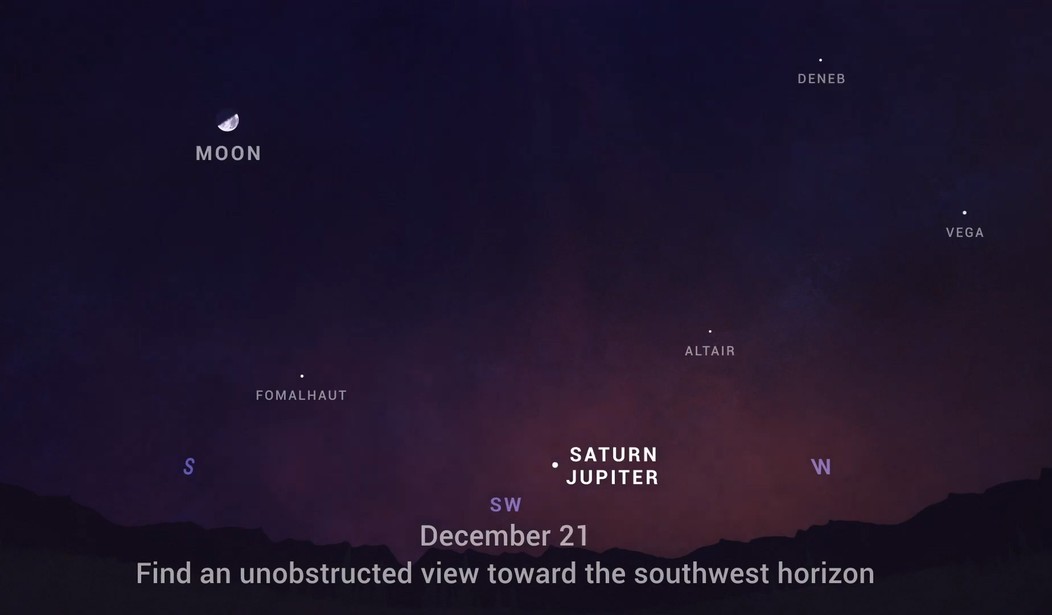Behold my picture of the Christmas Star. Yes, it sucks. Thank you for noticing. That is why I am a writer and not gainfully employed with NASA monitoring the Hubble Telescope. And besides, I took it with my phone. What do you expect from Apple?
Atheists and naysayers will rightfully note that what we are witnessing is nothing more than a conjunction of the planets. A rare event, but nothing particularly supernatural. On the opposite end of the spectrum, we have those Christians who will mark this moment as a watershed event in faith, a sign, if you will.
And it is both.
The “Three Wise Men,” or the “Three Kings of Orient Are” were actually Middle Eastern astrologers. Not the astrologers who warn you that Mercury is in retrograde or to beware of Scorpios in leisure suits, although that probably is good advice, no matter who you are. Rather, they were men who developed the science of scanning the heavens to chart the positions of the stars and the planets. Many years ago, they took note of this particular conjunction and, given the planets involved and the positions they were in, divined that something of great import had taken place regarding the kingship of Israel. And with that in mind, they set off on a months-long journey to Bethlehem to pay homage to this new monarch.
The monarch they found was probably not what they expected. And that should be of little surprise to us since the King of Kings is not what we expect or hope for.
Atheists are quick to point out that the elements of the Nativity and life of Christ are found in other ancient Near Eastern myths. To a degree, that is true, although there are a number of significant differences between those stories and the story of Jesus. Buy me a beer some time and I’ll be happy to discuss them with you. But the primary difference is this: in Christianity, we do not have a god taking on the form of a human or pretending to be man, we have God becoming man. A man who lived as we live, who cried, suffered, laughed, and died as we died, and yet who rose again.
This is not a Jesus who will elect the candidate of our choice. This is not a Jesus who will make us wealthy, healthy, or popular. This is not the Jesus who will deliver us from socialism or even COVID-19. This is not the Jesus who is our boyfriend, our fishing buddy, or “Uncle Jesus,” as one of my religion professors used to say. This is a Jesus who labors with us, and for us. And who loves us, and who is still Lord, King and, dare we say it, God.
So let us set aside the cuddly affectations of contemporary Christian music and dime-store theology that tries to convince us that we can worship God and still be the center of the universe. Such notions are vain and easily fall prey to the Flying Spaghetti Monster. Let us instead reflect on one of the oldest hymns in Christianity. An Advent hymn, a communion hymn, and still a salient piece of theology when contemplating the humanity and kingship of Christ.
Let all mortal flesh keep silence,
And with fear and trembling stand;
Ponder nothing earthly-minded,
For with blessing in his hand,
Christ our God to earth descendeth,
Our full homage to demand.
King of kings, yet born of Mary,
As of old on earth he stood,
Lord of lords, in human vesture,
He will give to all the faithful
His own self for heavenly food.
At his feet the six-winged seraph,
Cherubim, with sleepless eye,
Veil their faces to the presence,
As with ceaseless voice they cry:
Alleluia, Alleluia,
Alleluia, Lord Most High!
Amen.










Join the conversation as a VIP Member